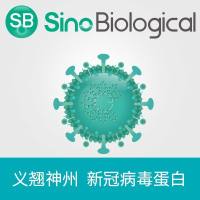Detection and Quantitative Evaluation of Endotoxin Contamination in Nanoparticle Formulations by LAL-Based Assays
互联网
互联网
相关产品推荐

WIP (Lysis Buffer for WB/IP Assays, Nondenaturing)(C-0013)-30ml/60ml/100ml
¥70

CD24/CD24蛋白/(Small cell lung carcinoma cluster 4 antigen) (CD24A)蛋白/Recombinant Human Signal transducer CD24 (CD24)-Nanoparticle (Active)重组蛋白
¥69

SIRPA/SIRPA蛋白Recombinant Human Tyrosine-protein phosphatase non-receptor type substrate 1 (SIRPA)重组蛋白Brain Ig-like molecule with tyrosine-based activation motifs蛋白
¥1344

SARS-CoV-2 Spike S1 ((LAL242-244)deletion, L18F, D80A, D215G, R246I, K417N, E484K, N501Y, D614G) Protein (His & AVI Tag), Biotinylated
¥4520

γ-氨基丁酸试剂盒,用于样本中GABA含量检测,微量法,GABA Content Detection Kit
¥358

